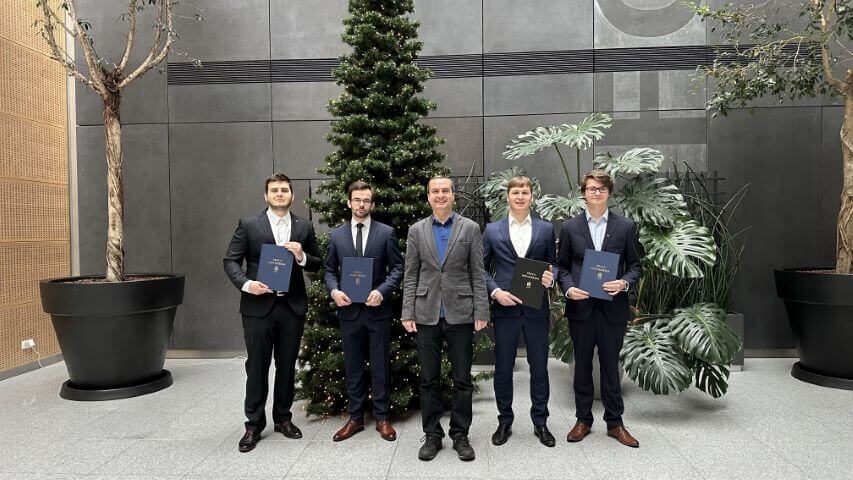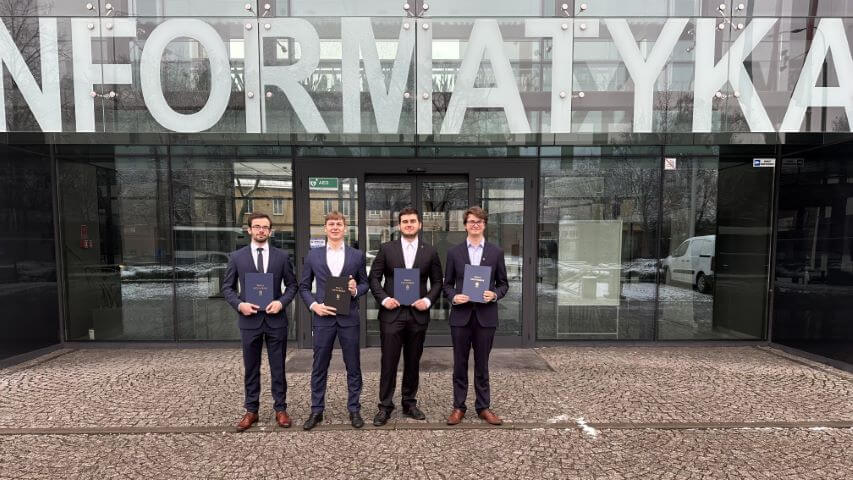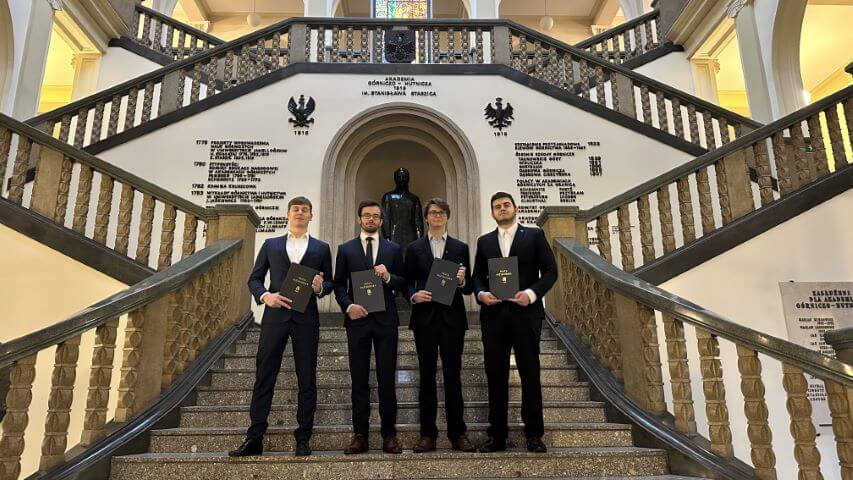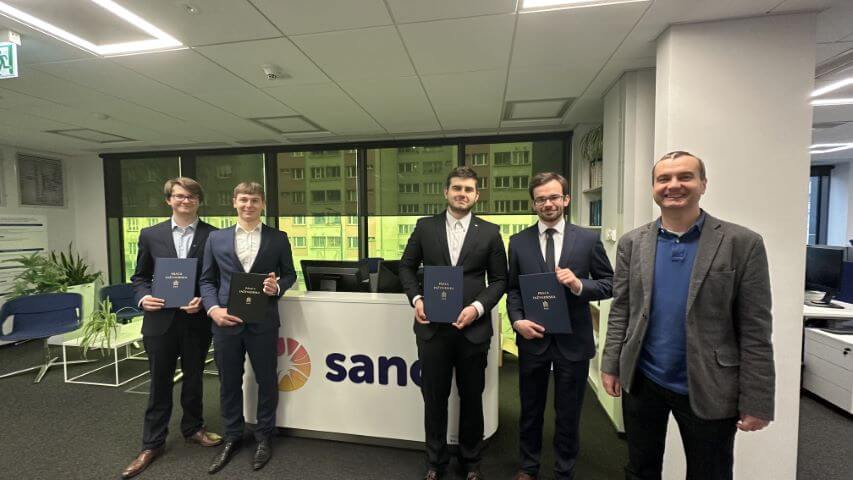Time to celebrate! Last Friday, January 20th, four Sano Science students: Adam Nowak, Krzysztof Gądek, Piotr Kica, and Karol Zając defended their thesis and received Engineer’s degrees!
“Tools supporting the execution of computational models in in-silico medicine” – it’s the subject of the defended thesis written under the supervision of Professor Maciej Malawski.
In-silico is a fast-growing field in computational science. Nowadays, scientists use computer simulation instead of performing time-consuming and expensive in-vivo/in-vitro medicine experiments. Each in-silico solution meets individual requirements, depending on the modelled disease. The international In Silico World project introduces new solutions, which need to be tested with virtual patient datasets, certified and deployed. High-performance computing resources are the most common to perform large scale simulations of in-silico models, but not every scientist is familiar with this infrastructure. This may also raise concerns if each in-silico process requires such a computational power.
For this reason, the Model Execution Environment (MEE) platform was created in ACC Cyfronet. Its goal is to facilitate the use of HPC resources by scientists and provide reusable workflows for their computations. From the beginning, MEE was supporting only simulating single patient case consisting of multiple steps. It offered only HPC storage and the user could not simulate many instances of the model at once with different parameters. Because of this limitation, we treat this platform as a base for developing features allowing to simulate large scale models, that had to be simulated for many patients, even a thousand times.
The processes of verification, validation and uncertainty quantification (VVUQ) are necessary to create accurate computational models. From the computing perspective, VVUQ is a computationally intensive process, as it requires numerous runs with variations of input parameters. Scientists usually make use of HPC to run VVUQ simulations, however cloud computing services can greatly facilitate and provide an alternative to current methods. Serverless compute services offer on-demand access to resources and highly concurrent executions. This is perfect for running multiple, parallel model executions as the VVUQ process may require many thousands of such tasks.
From this standpoint, our students’ proposed solution extends MEE by introducing cohorts and campaigns that allow scientists to simulate the same MEE workflow multiple times for all the cohort’s patients with only one-time configuration. Another improvement that they implemented is a support for cloud storage which can be used as an alternative to the HPC, when it comes to storing sensitive data and its security.
The CloudVVUQ library was created to facilitate and speed-up VVUQ processes using cloud serverless services such as AWS Lambda and Google Cloud Run. Performance tests on the real-life computational models present the scalability of our library. This new approach results in significant improvement in execution times of VVUQ workflows.
Using computational models delivered by ISW partners they could verify and test our features. They prepared a number of MEE organizations for ISW solutions and adapted these models to our infrastructures. Multiple pipeline versions were implemented and parametrized to fulfill the run-time requirements.
We can proudly summarized that the new extensions to MEE Piotr, Adam, Krzysztof, and Karol proposed and developed, together with their CloudVVUQ library, are valuable contribution to the tools supporting execution of computational models in in-silico medicine.
Congratulations and we support your future research, Adam, Piotr, Karol, and Krzysztof!






